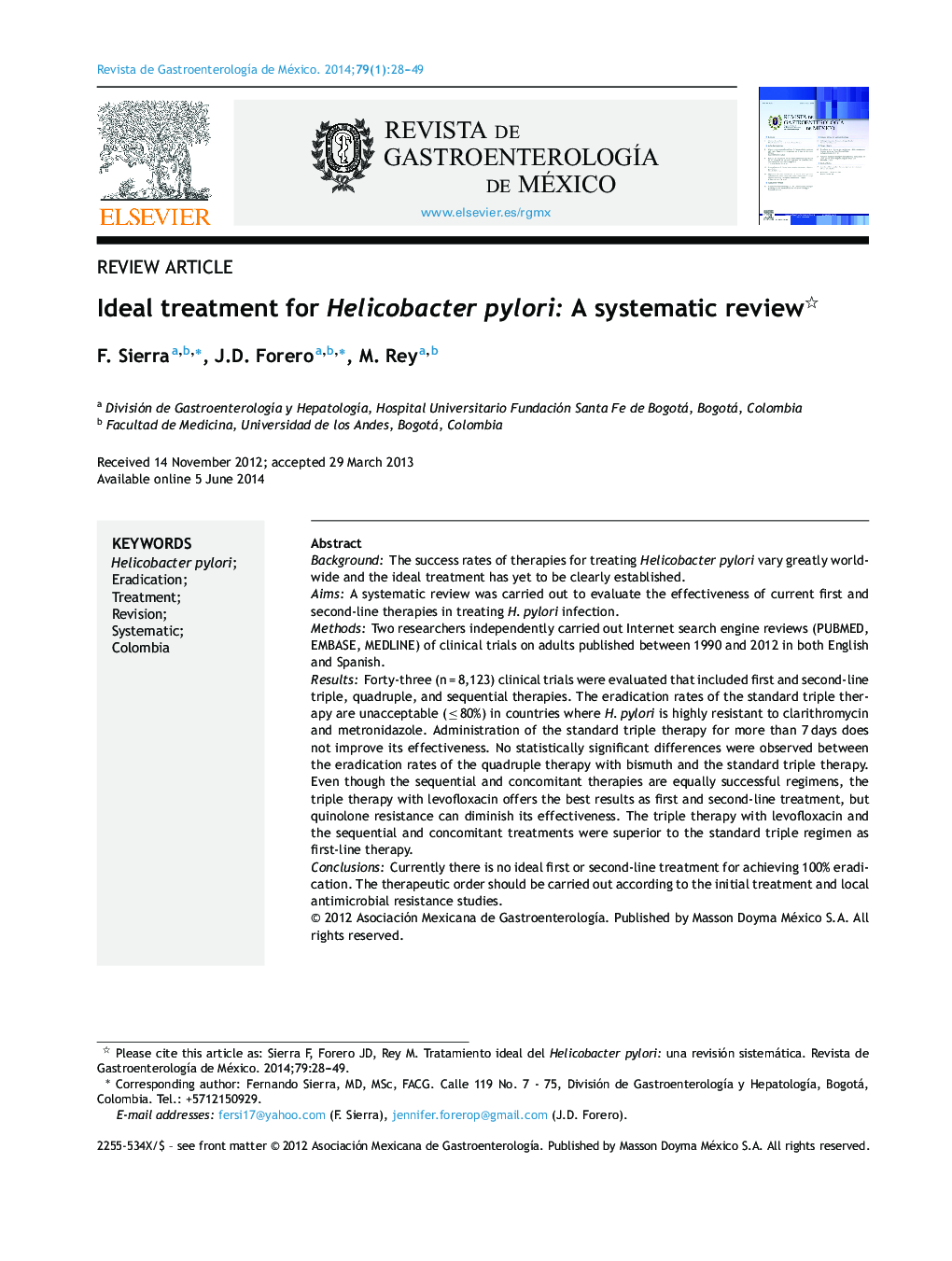| کد مقاله | کد نشریه | سال انتشار | مقاله انگلیسی | نسخه تمام متن |
|---|---|---|---|---|
| 3319138 | 1211665 | 2014 | 22 صفحه PDF | دانلود رایگان |
BackgroundThe success rates of therapies for treating Helicobacter pylori vary greatly worldwide and the ideal treatment has yet to be clearly established.AimsA systematic review was carried out to evaluate the effectiveness of current first and second-line therapies in treating H. pylori infection.MethodsTwo researchers independently carried out Internet search engine reviews (PUBMED, EMBASE, MEDLINE) of clinical trials on adults published between 1990 and 2012 in both English and Spanish.ResultsForty-three (n = 8,123) clinical trials were evaluated that included first and second-line triple, quadruple, and sequential therapies. The eradication rates of the standard triple therapy are unacceptable (≤ 80%) in countries where H. pylori is highly resistant to clarithromycin and metronidazole. Administration of the standard triple therapy for more than 7 days does not improve its effectiveness. No statistically significant differences were observed between the eradication rates of the quadruple therapy with bismuth and the standard triple therapy. Even though the sequential and concomitant therapies are equally successful regimens, the triple therapy with levofloxacin offers the best results as first and second-line treatment, but quinolone resistance can diminish its effectiveness. The triple therapy with levofloxacin and the sequential and concomitant treatments were superior to the standard triple regimen as first-line therapy.ConclusionsCurrently there is no ideal first or second-line treatment for achieving 100% eradication. The therapeutic order should be carried out according to the initial treatment and local antimicrobial resistance studies.
ResumenAntecedentesLas tasas de éxito de las terapias para tratar el Helicobacter pylori varían ampliamente a nivel mundial. El tratamiento óptimo no ha sido claramente establecido.ObjetivoSe realizó un revisión sistemática para evaluar la eficacia de las terapias actuales de primera y segunda línea en la infección por Helicobacter pylori.MétodosDos investigadores realizaron la revisión independiente en motores de búsqueda electrónica (PUBMED, EMBASE, MEDLINE) de ensayos clínicos publicados entre 1990 y 2012, incluyendo adultos e idiomas inglés y español.ResultadosSe evaluaron 43 ensayos clínicos (n = 8,123), que incluyen terapias triples, cuádruples y secuenciales, de primera y segunda línea. Las tasas de erradicación de la terapia triple estándar son inaceptables (≤ 80%) en países donde el H. pylori presenta alta resistencia a claritromicina y metronidazol. Un tiempo mayor a 7 días no mejora la eficacia de la triple terapia estándar. No se observaron diferencias significativas entre las tasas de erradicación de la terapia cuádruple con bismuto y la triple terapia estándar. Aunque las terapias secuencial y concomitante son regímenes igualmente exitosos, la terapia triple con levofloxacino ofrece los mejores resultados como primera y segunda línea, pero la resistencia a quinolonas puede disminuir su eficacia. La triple terapia con levofloxacino, la secuencial y la concomitante fueron superiores al esquema triple estándar como régimen de primera línea.ConclusionesActualmente no existe un tratamiento óptimo de primera o segunda línea que logre una erradicación del 100%. El orden terapéutico deberá realizarse acorde al tratamiento inicial y a estudios locales de resistencia antimicrobiana.
Journal: Revista de Gastroenterología de México (English Edition) - Volume 79, Issue 1, January–March 2014, Pages 28–49
